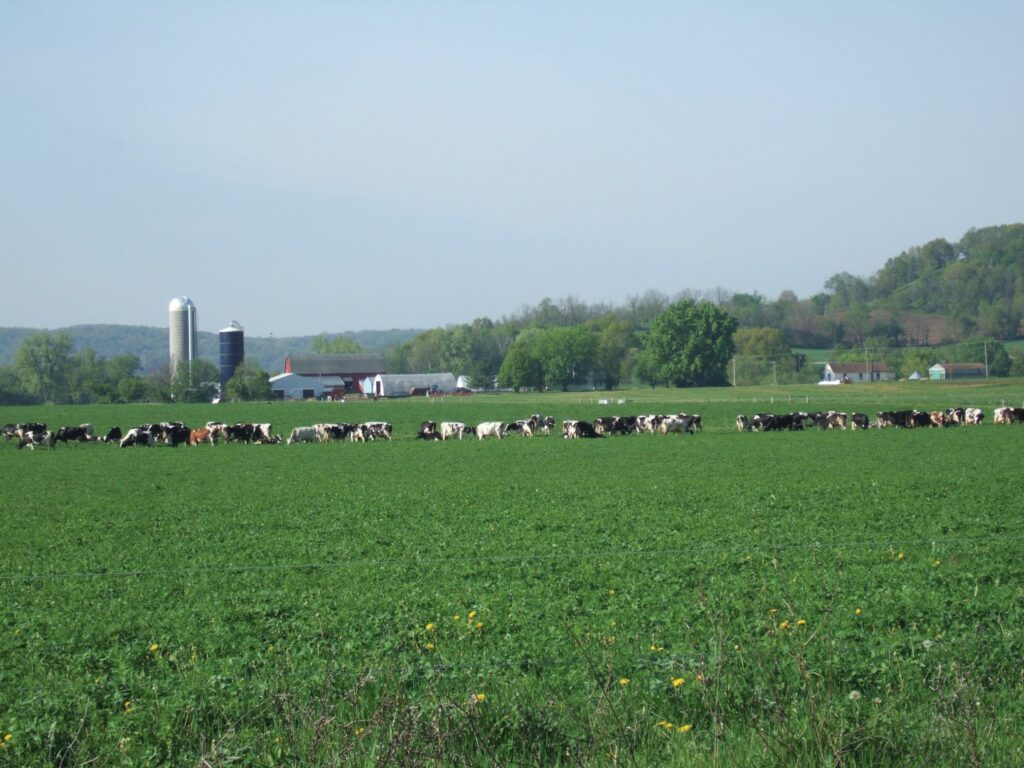Dear Farmer/Agribusiness person,
My first book, “The Biological Farmer,” came out 15 years ago. Since then, I’ve met hundreds of farmers as I traveled the world in search of innovative biological farming practices and ideas. I’ve spoken with farmers of many different agricultural backgrounds about a variety of topics, including soils, crops, livestock, land, management, and natural resources.
What makes biological farming work? Essentially, support of biological system basics: plant diversity; creating an ideal home for soil life and feeding it well; managing soil, air, and water; and providing a balance of minerals in the soil. Much like the way a cow’s rumen functions, biological farming works effectively when the system’s rules are followed, and fails when they are not.
What common goal drives biological farmers? Increasing and balancing plant-available minerals in the soil. To accomplish this, I believe you not only need a variety of all the major minerals that we test for (calcium, phosphorus, sulfur, potassium, magnesium, zinc, manganese, iron, and boron), but also nutrients sourced from natural-mined rock materials and animal manures. We also must manage nitrogen, which can be grown in the form of forages and green manure crops. Green manure crops provide carbon, nitrogen, and feed for soil life, and also supply, hold, and recycle minerals.
As biological farmers, we must take every opportunity to feed soil life and create an ideal home for our “soil livestock.” Doing so improves soil structure and soil health, which in turn helps grow larger root systems that capture and retain moisture. Minerals, soil life, and soil health are central to the biological farming system. The better we are at farming with this system, the more successful we can be.
So, what is the biological farming system? Everything in the soil used in crop production. This includes the basics — minerals, sunshine, and water. Most minerals come from the soil and are made plant-available through organic matter, soil life, and farming methods.
What can farmers do to improve availability of minerals? Careful selection of fertilizer sources is a good starting point. By including soil nutrients in our fertilizers and delivering them hooked to a carbon source as nature does, we can improve both soil and crop nutrition. Soil health and soil structure, while not always easy to measure, are important factors in plant growth and water management. A good soil structure can capture, retain, and aid in the distribution of nutrients and water.
For me, the farm is a day-after-day learning experience. With biological farming, common sense and a good eye for observation can take you a long way toward success. This is the challenge and the fun in farming; this is what I share, talk about, learn from, demonstrate, and observe with farmers all over the world. It’s about taking biological farming concepts and applying what best fits your farm and your management system. It’s about always improving the system. It takes time to see results, but once you start, it just keeps getting better and better.
My travels have provided me with many opportunities to listen to a wide variety of farming stories, learn from others’ experiences, and apply the best practices on my family’s farm, Otter Creek.
At Otter Creek, we make milk from quality forage. Because we like to feed 65-75 percent forages, we need tasty, highly digestible feed with balanced mineral content that is high in energy to keep cows productive. While we rotationally graze from April to November on a smorgasbord of legumes, grasses, and brassicas, we also must have quality stored feed for winter months.
Quality forages form the basis of our rations, and that forage quality starts in the soil. The soil fertility program starts with a soil test that goes beyond N-P-K to include secondary and trace minerals. We add any mineral that is in short supply, starting with calcium and phosphorus, and use natural-mined minerals when possible. Calcium, sulfur, and boron are always involved.
We do calcium and soil correctives in the fall, apply a crop fertilizer early in spring, and apply compost-type manures in the summer. We also provide a balanced diet for the current year’s crop, again including trace elements. In our fields, we grow a large diversity of plants to extract natural soil minerals and run a tight crop rotation — our standard forage rotation is just two years. This tight rotation improves our feed quality and nutrient management and works great for growing corn in the third year. Our forage stands are typically a blend of alfalfa and other types of legumes and grasses — blends vary depending on the feed we want and on soil conditions.
Once we’ve grown our forages, the Otter Creek crew does everything it can to maintain feed quality. Forage harvesting is a priority job; from timely cutting to wrap-baling quickly and using inoculants to proper storage, every step is designed to maintain feed quality. These high-quality forages reduce our need to purchase costly feed supplements.
Gary F. Zimmer

